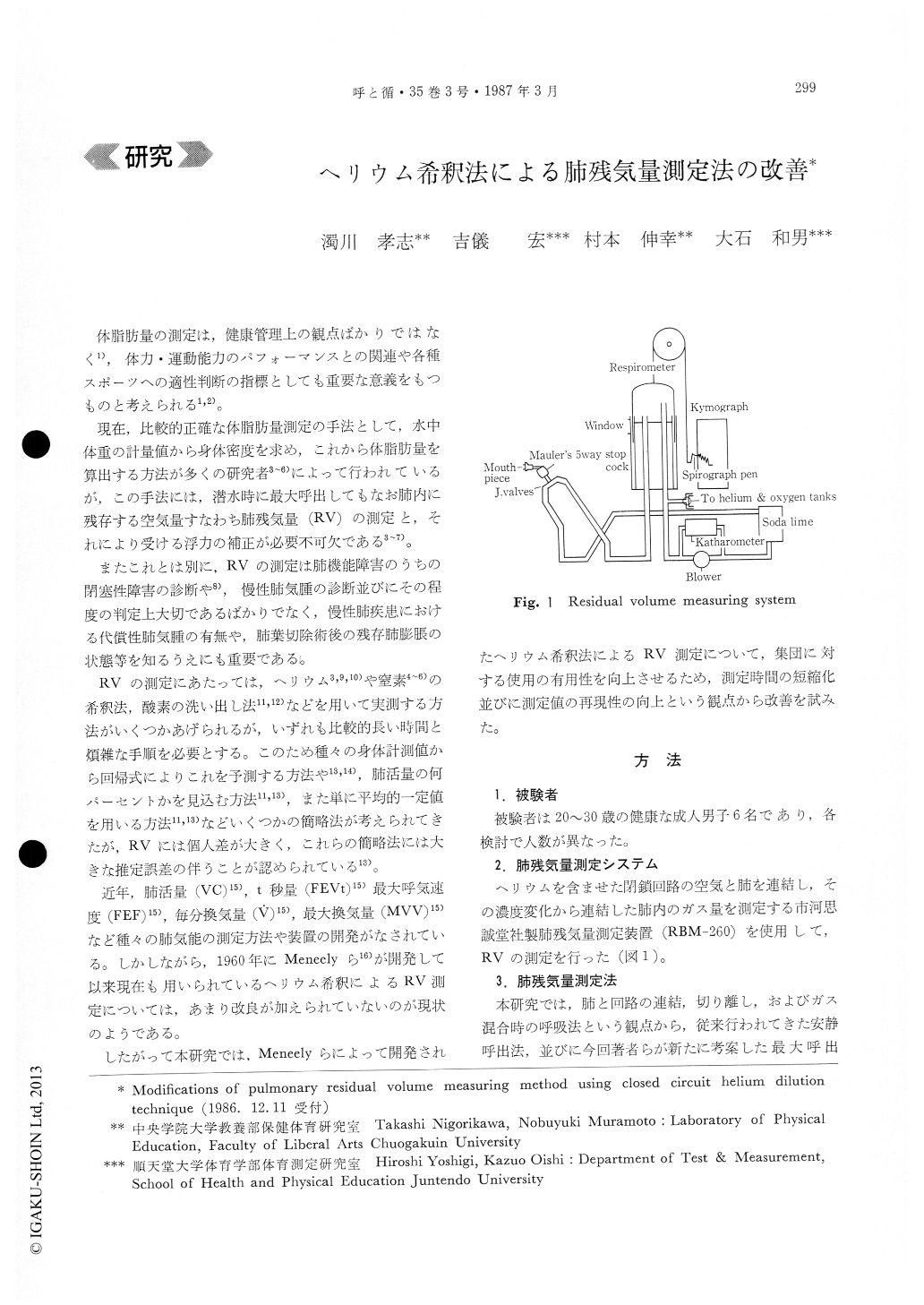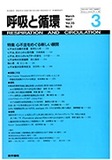Japanese
English
- 有料閲覧
- Abstract 文献概要
- 1ページ目 Look Inside
体脂肪量の測定は,健康管理上の観点ばかりではなく1),体力・運動能力のパフォーマンスとの関連や各種スポーツへの適性判断の指標としても重要な意義をもつものと考えられる1,2)。
現在,比較的正確な体脂肪量測定の手法として,水中体重の計量値から身体密度を求め,これから体脂肪量を算出する方法が多くの研究者3〜6)によって行われているが,この手法には,潜水時に最大呼出してもなお肺内に残存する空気量すなわち肺残気量(RV)の測定と,それにより受ける浮力の補正が必要不可欠である3〜7)。
The purpose of the present study was to modify the pulmonary residual volume (RV) measuring method using closed circuit helium dilution technique. The modifications were attemped in the standpoint of time saving and stabilizing the measurements.
Subjects were six healthy males, twenty to thirty in age.
The RVs were measured by three different techni-ques as follows:
1) Ordinarily exhale method (OEM) which have been carried out in many investigators.
2) Fully exhale method (FEM) which was developed by authors.
3) Deep breathing method (DBM) which was also developed by authors.
No obvious differences were produced between the two types of RV measurements which were obtained by using OEM and FEM. However, since FEM pro-duced smaller SD than that of OEM in RV measure-ments, it may be concluded that FEM should be choosen in respect to stability of measurements.
When gas mixing was done by DBM proper RV measurements were obtained by three to five times of deep breathing. Therefore, DBM would be recommend-ed in regard to time saving. In addition, since DBM is one of the fully exhale methods in regard to switching the connection between the lungs and the circuit. this technique would be expected to produce a stable mea-surement. Therefore, this technique would be considered to provide a very useful tool to the investigators measur-ing RV.
Duration of gas mixing have been proposed to conti-nue for seven to ten minutes traditionally. However, our experiments revealed that three minutes of gas mixing also produced stable RV measurements.

Copyright © 1987, Igaku-Shoin Ltd. All rights reserved.


